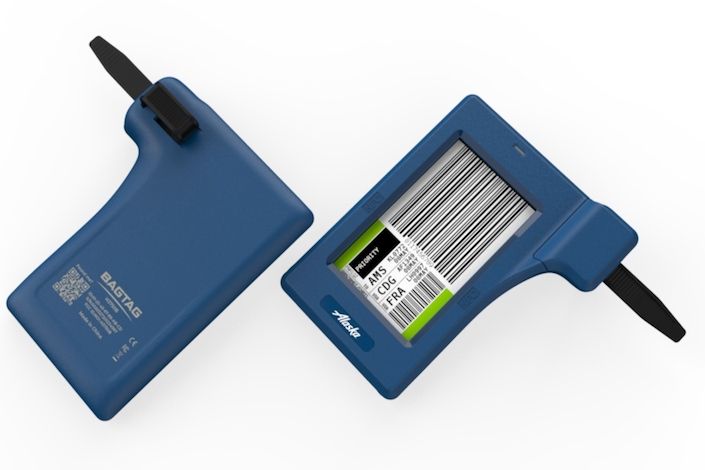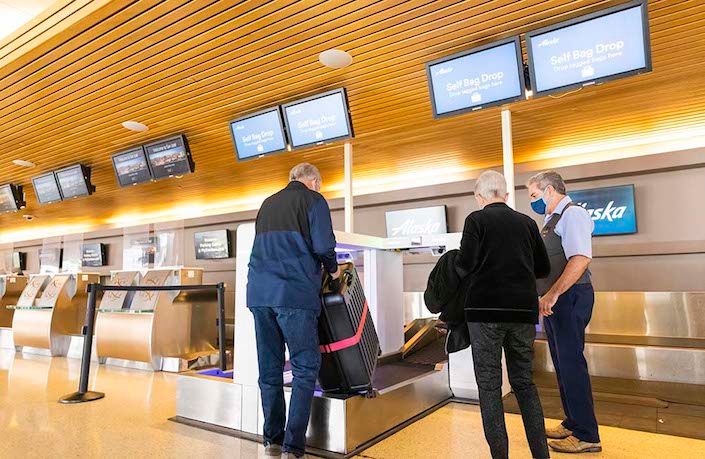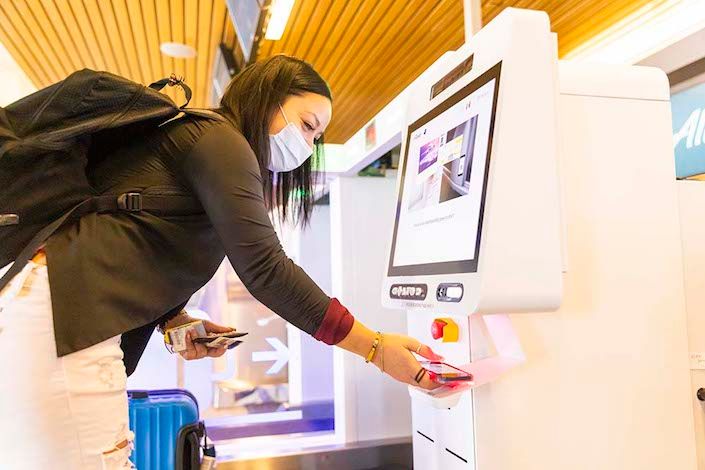Where travel agents earn, learn and save!
News / Alaska Airlines becomes first U.S. airline to launch electronic bag tag program
Alaska Airlines is adopting electronic bag tags that can be attached before arriving at the airport, the first US airline to adopt BAGTAG technology

Anybody who has seen recent pictures of hundreds of bags stacked by carousels or heard about baggage-only flights needs to read this. Alaska Airlines plans to be the first US airline to launch electronic bag tags that will allow passengers to complete all of the check-in processes digitally, up to 24 hours before their flight.
Time to tag your bags at home
Alaska Airlines is adopting the system from Netherlands company BAGTAG, which launched it with Lufthansa in 2018. Passengers can check in online from almost anywhere which, when combined with a digital boarding pass, makes for a touchless and seamless start to the flight. As airports and airlines face chronic staff shortages, self-check-in has reduced queues, leaving just the printing and affixing of baggage tags as the only manual part of the process. This is where the BAGTAG technology, in tandem with the airline's passenger system and mobile app, takes that manual process away.
Alaska Airlines (Alaska) SVP of merchandising and innovation, Charu Jain, explains that the technology "allows guests to tag their bags in just seconds and makes the entire process almost all off-airport."
"Not only will our electronic bag tags allow our guests to quickly drop off their luggage after they arrive at the airport, the devices will also give our employees the opportunity to spend more one-on-one time with guests who ask for assistance and reduce lines at our lobbies."
BAGTAG was founded in 2014, and Alaska will join six other users, Lufthansa, SWISS, Austrian Airlines, Air Dolomiti, KLM Royal Dutch Airlines and China Southern Airlines. Qatar Airways is also adopting BAGTAG this year, and Alaska will roll the system out in phases, starting with their frequent flyers later this year, followed by Mileage Plan members early in 2023. Alaska uses California's San Jose International Airport (SJC) as an incubator for seamless travel technologies, including kiosk-less lobbies, biometric boarding and a new self bag drop system.
Alaska Airlines is trialing more seamless check-in options
The heart of the BAGTAG is the electronic bag tag, which is attached to the bag using a solid strap that can only be removed with a tool that is like a SIM removal tool. The tag needs no battery because it uses energy from a mobile phone's antenna to change the display to the customer's data. The data is visible and readable when there is no power to the tag, or the display is damaged. As a backup, a QR code on the back identifies the tag and the passenger's details if they have registered the tag with BAGTAG.
The tag activates by touching it to the phone used for check-in, and the tag's antenna reads the information transmitted from the phone. The screen will display the passenger's flight information, with the required information as on a traditional tag. For example, baggage tags issued in the European Union feature a green stripe to facilitate the free movement of goods.
In contrast, no green stripe means the journey started outside the EU, which may attract the attention of customs authorities. The passenger then heads for the airport with their travel information, boarding pass and baggage tag completed digitally and on their phone. At the airport, the passenger drops the bag off and is ready to travel, having already ensured the tag's accuracy.










